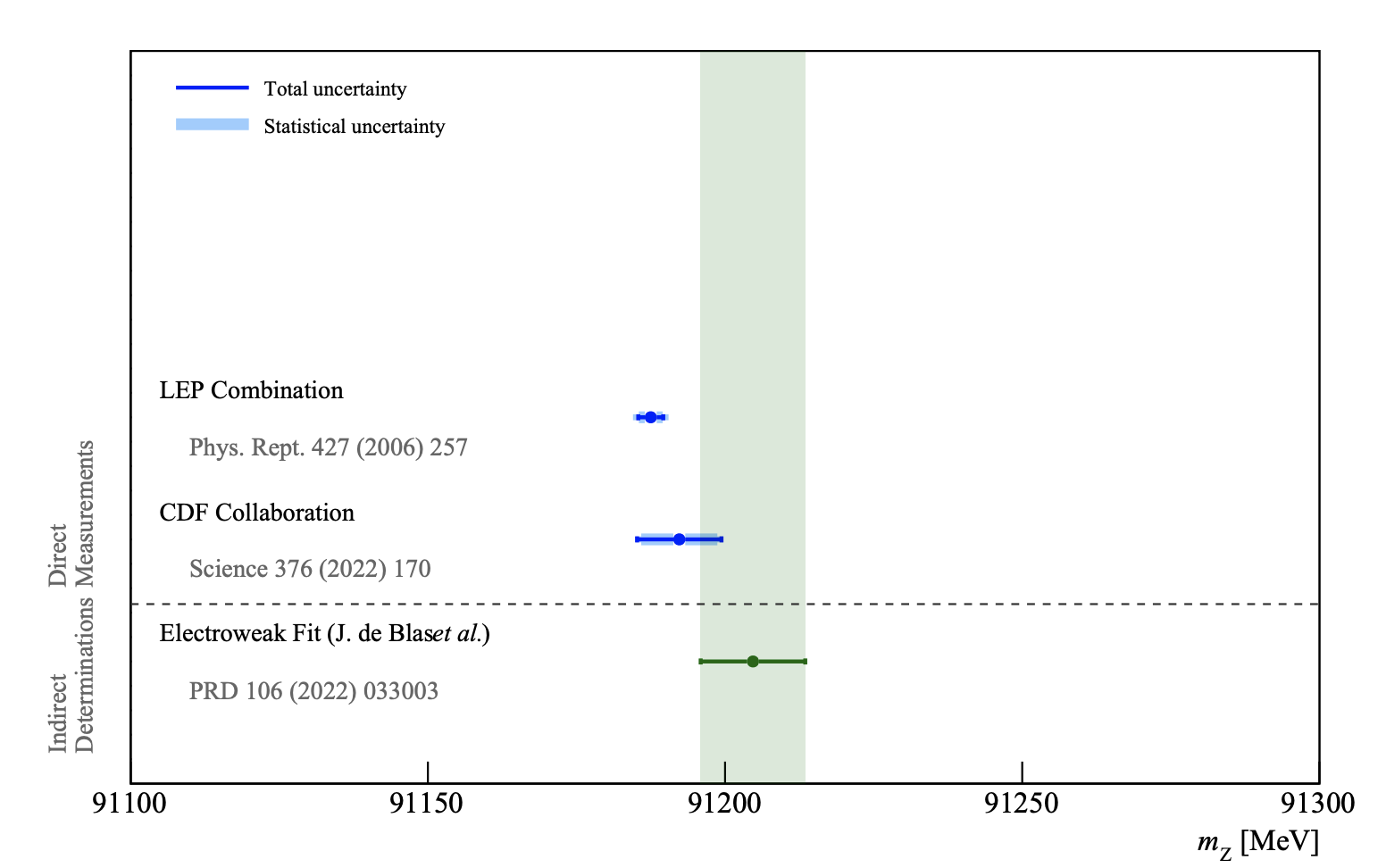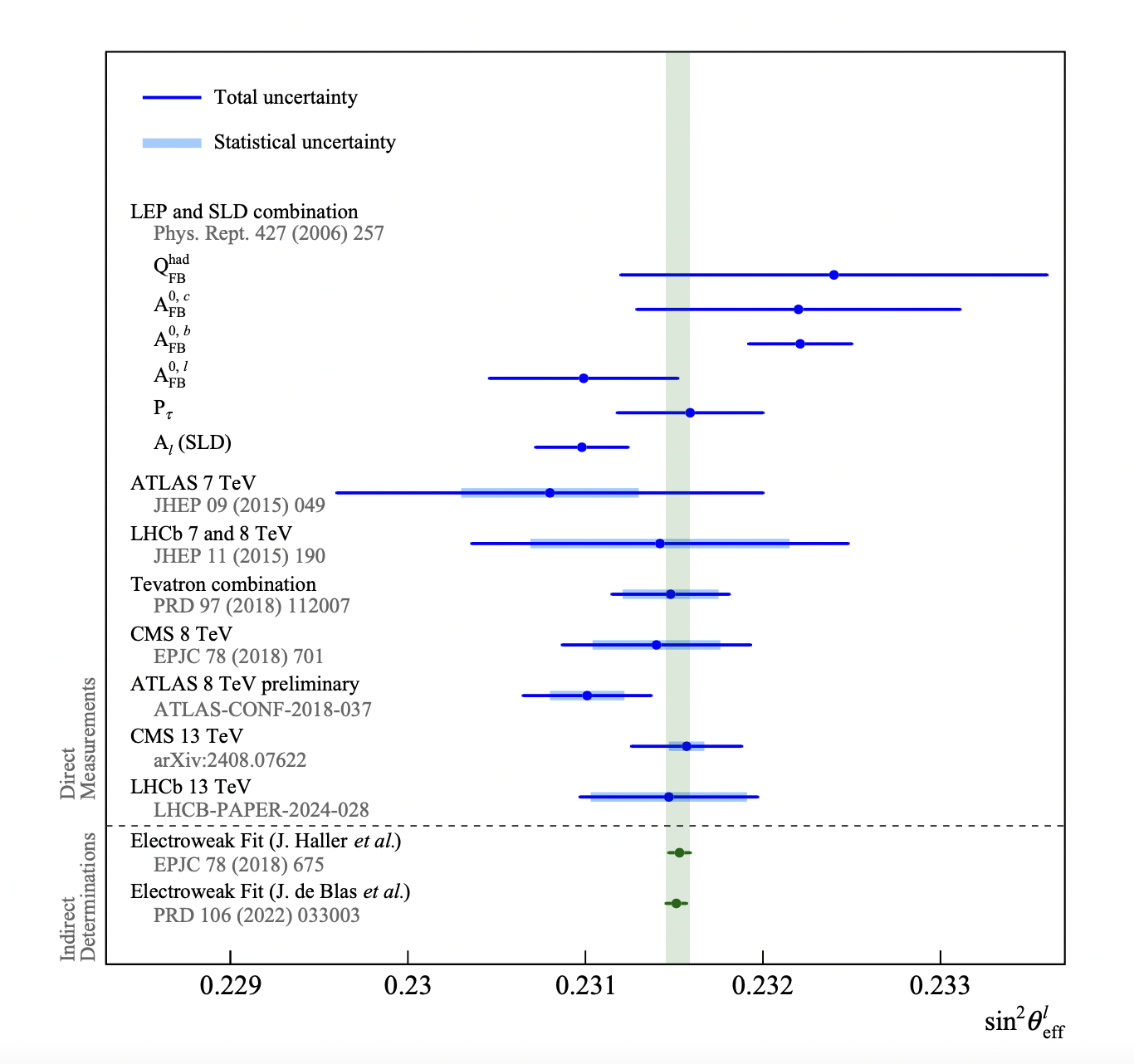Tracing the Path to Precision: The Historical Evolution of Electroweak Physics at the LHC

The unification of the electromagnetic and weak-nuclear forces into an electroweak theory was one of the major breakthroughs of 20th century particle physics. In the 1960s, Steven Weinberg, Sheldon Glashow, and Abdus Salam proposed that these two forces, which appear at different energy scales, could be unified at higher energies. This theory introduced the W and Z boson as fundamental particles which are responsible for the weak interaction, while the photon remained the carrier of electromagnetism. The W and Z bosons are charged and can interact with each other, and there is a significant program to study these interactions through multi-boson production. The key point of this theory is spontaneous symmetry breaking, which explains how W and Z bosons have mass, thus constraining the weak-nuclear force to short distances, while electromagnetism is free to act as a long-range force. In the Standard Model (SM), this unification is realized through the gauge symmetry group SU(2)L×U(1),Y which governs the electroweak interactions. The Higgs mechanism plays a crucial role. The focus of this article is on the masses of the weak bosons and their couplings to fermions, which are fundamental parameters in testing the validity of the SM.
In proton-proton collisions, vector bosons are predominantly produced through quark-antiquark annihilation at leading order in quantum chromodynamics (QCD). At higher orders, the transverse momentum (pT) of the vector bosons becomes non-zero due to higher-order QCD effects. The production of W and Z bosons is influenced by both perturbative and non-perturbative QCD processes, especially at low pT, making these measurements an excellent input for QCD predictions across a wide range of energy scales. Additionally, precise measurements of production cross-sections provide important constraints on parton distribution functions (PDFs), with experiments at the LHC together providing information across a wide range of x values, thereby enhancing our understanding of QCD dynamics. Electroweak precision measurements also play a complementary role in validating the Higgs mechanism within the SM, which describes electroweak symmetry breaking. As the source of symmetry breaking, the mass and couplings of the Higgs boson directly influence electroweak observables, including the masses of the W and Z bosons. Therefore, precision measurements compared with SM predictions provide a powerful tool for testing the validity of the Higgs mechanism.
Current measurements
The LHC produces W and Z bosons with large cross-sections, the ATLAS, CMS and LHCb experiments have provided measurements at different energies, providing an excellent platform for precise electroweak measurements. Figures 1, 2, and 3 summarize the results of the W and Z cross-section measurements from ATLAS, CMS, and LHCb, respectively. These results are crucial for testing the SM and understanding the electroweak interactions. The electroweak interactions are governed by three parameters: the energy of the Higgs field and two coupling strengths. These can be mapped to three measurable quantities: the masses of the W and Z bosons and sin2 θ, where θ is an effective value of the weak-mixing angle that relates the two coupling strengths for leptonic interactions. These parameters have been precisely predicted theoretically, so the deviation between direct and indirect measurements could be a signal of new physics.

Figure 1: The measured W and Z boson total production cross-sections in the leptonic decay channel at different values of centre-of-mass energy, as reported by the ATLAS experiment. Credit: ATLAS Collaboration, Phys. Lett. B 854 (2024) 138725
Figure 4 shows the current status of the W boson mass measurement. The most recent measurement, reported by the CMS collaboration, is consistent with the SM prediction, and its precision is similar to the CDF precision. All LHC measurements are in agreement with the SM model and are internally consistent. In contrast, the CDF results deviate by 7 standard deviations from the SM prediction, and they are also in tension with other measurements. Furthermore, the compatibility and combination of W boson mass measurements paper shows that due to the negative correlation between the W mass results from ATLAS and LHCb in the PDFs, combining the results from these two experiments will yield a more precise measurement than any single experiment. The combination with the CMS results is ongoing, and the precision will continue to improve.
The Z boson mass was measured with a precision of 2 parts in 105 by the LEP electron-positron collider in the 1990s. As shown in Figure 5, this precision even surpasses that of the theoretical prediction provided by the electroweak fit, and it has not been challenged since.
The most precise measurement of the invisible width of the Z boson also comes from LEP experiments, which directly measure the total width and then subtract the partial width from the visible final states (a pair of leptons and hadrons). CMS and ATLAS performed similar measurements, the uncertainties are equivalent to LEP and are consistent with the SM description as shown in Figure 6.
The weak mixing angle can be measured by the angular distributions of the Z-boson decays as it controls the Z boson couplings. At electron-positron colliders, sin2θℓeff has been measured with a precision of 1 part in 103 , the two most precise results are from SLD and LEP, but they are in tension with each other, leading to speculations about the potential influence of new non-SM particles. The LHC experiments are already matching their precision. Figure 7 summarizes the current experimental status of weak mixing angle measurement. The latest results reported by the CMS and LHCb collaborations are consistent with the SM. The CMS Run-2 results already rival the most precise measurements from SLD and LEP, and the LHC Run-3 results are expected to pass their precision.

Figure 2: The measurements of the total inclusive cross-sections for W and Z boson production times branching fractions versus center-of-mass energy from CMS and experiments at lower-energy colliders. Credit: CMS Collaboration, arXiv:2408.03744.

Figure 3: The Z → µ+µ− cross-section results in pp collisions at LHCb as a function of the center-of-mass energy. Credit: LHCb Collaboration, JHEP 02 (2024) 070.
Future outlook
The LHC experiments completed the first phase of upgrades in 2022 and resumed data collection in 2023. Building on this, the LHC plans a further high luminosity upgrade in the 2030s, which will provide a total integrated luminosity of 3ab−1 for ATLAS and CMS.

Figure 4: The summary of mW measurements. Credit: CMS Collaboration, CMS-PAS-SMP-23-002

Figure 5: Current status of mZ. Credit: LHCb Collaboration

Figure 6: The summary of results for the invisible width of the Z boson. The SM prediction is represented by the solid red line. Credit: ATLAS Collaboration, Phys. Lett. B 854 (2024) 138705
The LHCb experiment also aims to collect over 300fb−1 of integrated luminosity by the end of the LHC operations. Although luminosity is not the limiting factor for these measurements, systematics are. As a result, the datasets are already sufficient to constrain systematic uncertainties.

Figure 7: The summary of direct measurements and indirect determinations of sin2θℓeff. Credit: LHCb Collaboration, JHEP12(2024)026.
With upgraded detectors, improved experimental techniques, and enhanced theoretical models, experimental precision will be significantly improved. This will also greatly expand the reach of both direct and indirect searches for new physics. Unprecedented energy scales will be explored, and any potential deviations from the SM may become more visible.
Note from the editor: For further reading on related advancements on electroweak precision at the LHC, you can read a recent article published in the CERN Courier.
